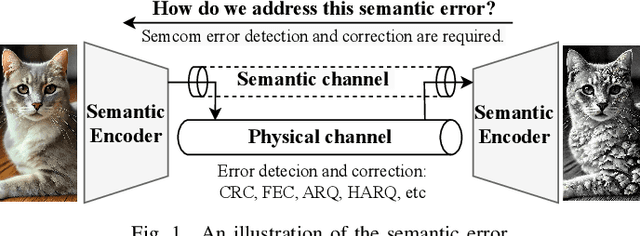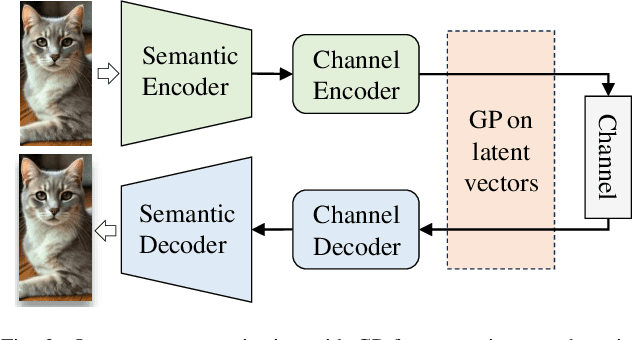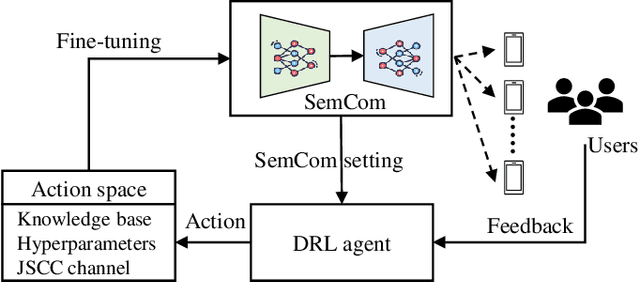Building the Self-Improvement Loop: Error Detection and Correction in Goal-Oriented Semantic Communications
Paper and Code
Nov 03, 2024



Error detection and correction are essential for ensuring robust and reliable operation in modern communication systems, particularly in complex transmission environments. However, discussions on these topics have largely been overlooked in semantic communication (SemCom), which focuses on transmitting meaning rather than symbols, leading to significant improvements in communication efficiency. Despite these advantages, semantic errors -- stemming from discrepancies between transmitted and received meanings -- present a major challenge to system reliability. This paper addresses this gap by proposing a comprehensive framework for detecting and correcting semantic errors in SemCom systems. We formally define semantic error, detection, and correction mechanisms, and identify key sources of semantic errors. To address these challenges, we develop a Gaussian process (GP)-based method for latent space monitoring to detect errors, alongside a human-in-the-loop reinforcement learning (HITL-RL) approach to optimize semantic model configurations using user feedback. Experimental results validate the effectiveness of the proposed methods in mitigating semantic errors under various conditions, including adversarial attacks, input feature changes, physical channel variations, and user preference shifts. This work lays the foundation for more reliable and adaptive SemCom systems with robust semantic error management techniques.
 Add to Chrome
Add to Chrome Add to Firefox
Add to Firefox Add to Edge
Add to Edge